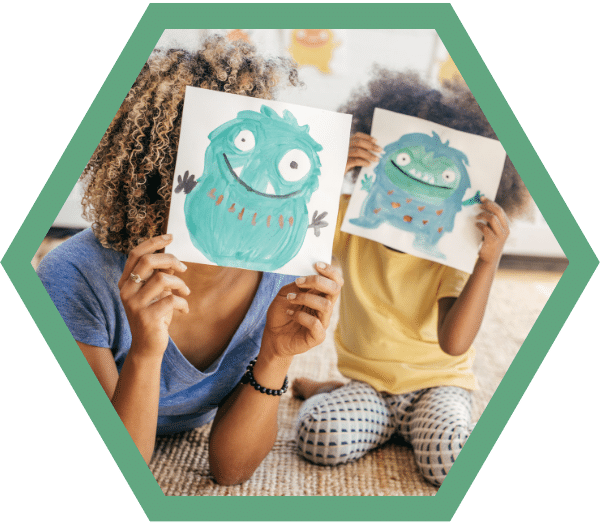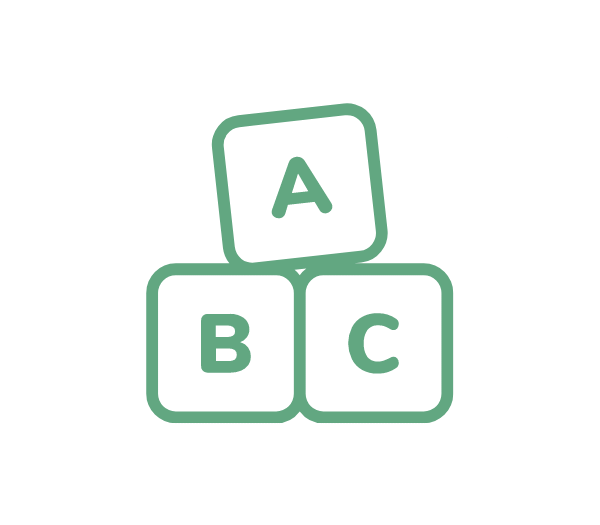
Toy and play information
Children aged
24 to 36 months
At this age your baby is starting to make friends, learn to play cooperatively and build concepts.

Play ideas
Finger painting crayons and pencil
How does it help the baby?
Helping my child develop prewriting skills
Tips:
- Using crayons to develop pencil grasp
- Practicing prewriting: lines and circles
- Finger painting helps coordinate hands and eyes
Note: may be easier to use larger sized crayons
Scroll down to read more.
Dressing-up, Duplo and plastic building set
How does it help the baby?
Helping my child develop creativity and imagination
Tips:
- Playing activities, such as shops, selling fruit and dressing-up
- Building and copying structures with blocks and bricks
- Making things with boxes, such as a doll’s house, shop or fortress
Scroll down to read more.
Picture matching and snap cards and memory games
How does it help the baby?
Helping my child understand colours and shapes
Tips:
- Matching pictures: introduces competitive game playing by matching shapes, colours and pictures
- Grouping objects, such as fruits, shapes and colours
- Playing memory games: pick 3 items, let your child have a look and then cover them with a blanket; remove one and let your child guess which item is missing
Scroll down to read more.
Books
How does it help the baby?
Helping my child build vocabulary
Tips:
- Going through books looking at pictures
- Reading the story together using the pictures as a guide
- Talking in past and future tense to build vocabulary, creativity and logical ordering of events, such as –
- What happened yesterday?
- What is going to happen tomorrow?
- Where are we going this afternoon?
Scroll down to read more.
Musical games
How does it help the baby?
Helping my child learn through music
Tips:
- Playing “Freeze” and other fun musical games
- Providing opportunities to listen and follow directions, while teaching about words and sounds
Note: You can add musical instruments too
Scroll down to read more.
Did you know?
Usually, children of this age are interested in playing with other children, as they learn to share and resolve conflicts. Also, they may learn new skills by watching others.
Tips and ideas
Building skills
Playing with others – Include other children in play activities to increase social skills and language development.
Building with blocks – Practice following instructions, fine motor skills, hand-eye coordination. Children will begin to stack them by size, colour or shape.
Drawing and prewriting – Practising prewriting skills. Can begin with chalk in the garden. Tracing around hands and feet.
Things to remember
Imaginary play – Encourage playing house, doctor, dressing-up games with hats, capes, dresses or make a believe tea party. Promotes creativity in play.
Obstacle courses and outside play – Cut out circles and place on floor, suggesting children hop from circle to circle. Set up activities that include running, crawling and hopping to get the ‘treasure’ at the end.
Social and emotional growth – Children at this age will begin to use symbols and ideas to express emotions and feelings.
Keep your baby safe
Be there for your child – Children at this age are explorers! They do not always understand danger. Supervision is important.
Home safety – Keep household chemicals, medicines and all dangerous objects out of reach. Be particularly careful in the kitchen to prevent burns and accidents.
Continue to limit screen time – Children learn by doing. Watching television decreases play time and may impact on learning.
Did you know?
At this age children enjoy moving and playing action games, and physical activities are very important to promote health and wellbeing. Try to have some outside play every day.
The advice on this page has been created by B. Hutchon and S. Powell, Royal Free London, together with Dr. A. Fernandez, Neonatologist San Jose Hospital, Chile.

